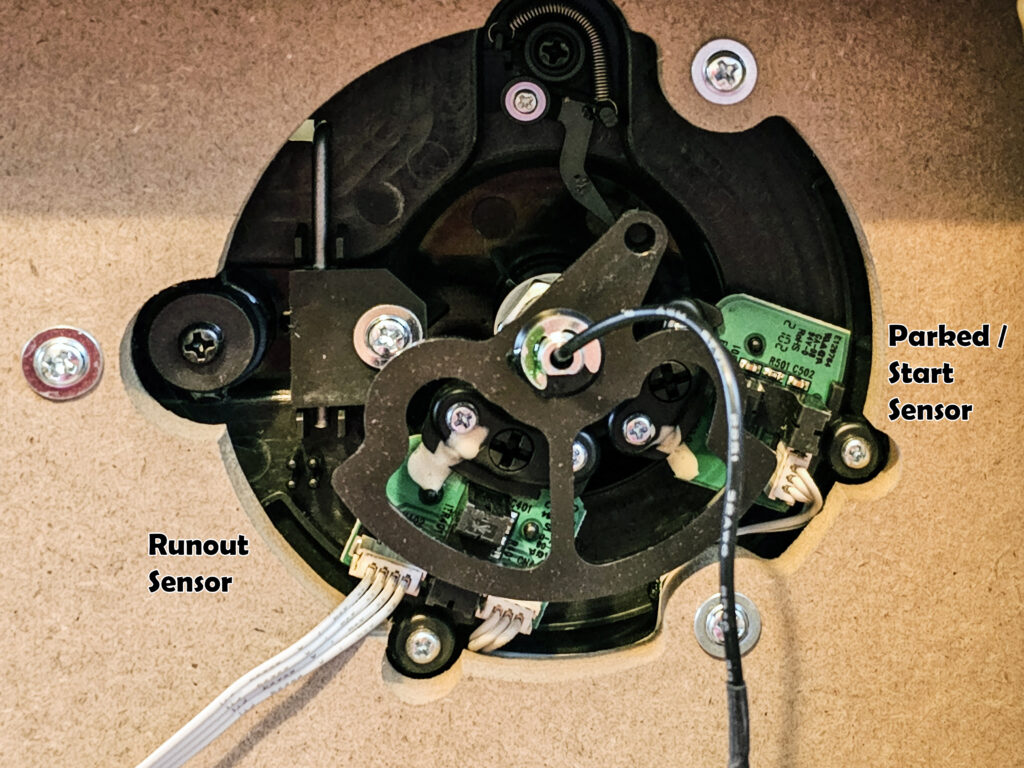Hi there! Finnley the Dolphin here. As you may already know, I am on a mission to discover the most unusual and offbeat records out there, and share them with all of you. But today, I want to share with you a challenge I encountered while recording some of these records using my entry level record player, the Insignia™ – Bluetooth Stereo Turntable model NS-BTST21.
As you might expect, not all records are created equal, and some can pose a challenge when it comes to recording them. Specifically, I ran into trouble with records that do not have a standard run-out groove, but instead feature audio right up to the very end. These records include jingles, promotional materials, educational materials, and more, and due to limited budgets are filled with content that is meant to utilize as much recording space as possible and will extend into the typical run-out area.
The auto-stop feature of my record player posed a problem and after receiving a few records that stopped prematurely, I realized that I needed to find a way to bypass this feature. So, I decided to take matters into my own fins and open up my record player to see what I could do.

Once I had the record player opened up, it was pretty easy to identify all of the components. I could see the transformer that took the stepped-down voltage to the board, the motor, the board containing the Bluetooth, the speed select switch, the volume control knob, the headphone jack, and of course, the tone arm. I could also see that the record player used a couple of optical photo gates to determine when the tone arm had been lifted off of its home position to start the player and the second sensor when stop the motor once it reached the end of the record.

The sensors work like this. Start sensor, or sensor 1, is blocked it will not turn the platter. The runout sensor, or sensor 2, is blocked, it will keep the platter turning. The tone arm guides a piece of plastic with blades which open or block the sensor. When the tone arm is parked, sensor 1 is blocked but sensor 2 is open. When the tone arm is lifted, both sensor 1 and sensor 2 are blocked. When the tone arm reaches the end of the record, sensor 1 is still blocked but sensor 2 opens.
Initially, I considered putting a piece of tape over the sensor to keep it running. But I soon realized that this solution would cause tracking issues if the tape were to come undone. So, I turned to the wire that ran from the sensor to the next board, and simply disconnected it. I was worried that this might prevent the record player from starting at all, but thankfully, it just always runs when the switch is in either 33 1/3 or 45 RPM, and can be turned off when not in use.

After I put the record player back together, I went back and made some recordings with the records that had shut off prematurely, and this time they played all the way to the end. I was thrilled to discover that my entry level record player could still fulfill my needs for recording these often less-than-ideal-condition records.
So, there you have it, folks! Even with an entry level record player like mine, you can still make the most of your unusual and offbeat records. With a little bit of tinkering and problem-solving, you can ensure that you capture all of the weirdness and humor that these records have to offer. Thanks for joining me on my audio adventures, and until next time, happy listening!
